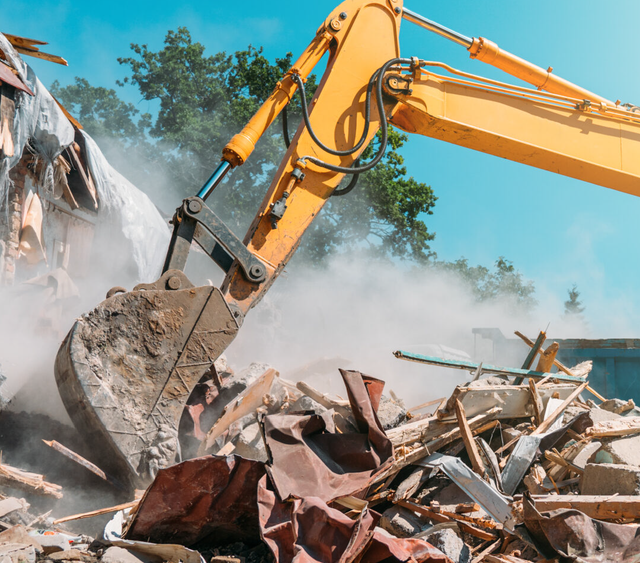The Ultimate Overview to Inside Demolition Techniques and Tools
Within the world of interior remodellings, the art of demolition is a crucial stage that calls for precision, ability, and the right set of devices. Whether you are an experienced professional or a DIY fanatic, comprehending the intricacies of indoor demolition strategies can make all the difference in accomplishing an effective task result.
Essential Indoor Demolition Devices
When taking on indoor demolition tasks, having the appropriate devices is important for efficiency and safety and security. Among the most important devices for interior demolition is the demolition hammer. This sturdy tool is developed to break with hard products like tile, concrete, and drywall. Its powerful hammering action can promptly destroy wall surfaces, floors, and various other frameworks. Furthermore, a lever is essential for removing fixtures, trim, and various other materials. Its take advantage of enables the simple removal of nails and various other fasteners without damaging the surrounding surfaces - interior demolition.
Another vital tool is a reciprocating saw, which is perfect for reducing through a variety of materials such as metal, timber, and plastic. Its ability to make specific cuts in tight areas makes it suitable for demolition job. Additionally, an energy blade is required for reducing products like carpet, vinyl flooring, and insulation. Its sharp blade guarantees tidy and precise cuts, helping with the elimination of unwanted products. On the whole, having these necessary interior demolition devices will substantially improve the effectiveness and safety of any demolition task.

Safety And Security Safety Measures During Demolition

Additionally, all workers associated with the demolition process ought to receive adequate training on the correct handling of tools and tools to minimize accidents. It is vital to safeguard the workspace by erecting indications and barriers to avoid unauthorized accessibility - interior demolition. Regularly examining and keeping devices and devices can additionally contribute to a safer working environment. By sticking to these security preventative measures, interior demolition projects can be executed successfully while prioritizing the well-being of all individuals included.
Strategies for Eliminating Wall Surfaces
Executing proper security preventative measures during interior demolition projects is critical for producing a safe workplace, and one key facet of such projects includes understanding strategies for getting rid of walls. One generally made use of method is hand-operated demolition, which needs using basic hand devices such as sledgehammers, crowbars, and utility blades to very carefully dismantle the wall surface piece by item. This method permits for higher control over the demolition procedure, especially in fragile locations where accuracy is vital.
For bigger, a lot more complicated wall surfaces, mechanical demolition might be necessary. This includes utilizing heavy equipment like excavators or excavators to tear down wall surfaces successfully. Nonetheless, it is vital to guarantee my company that the structural honesty of the building is not jeopardized during mechanical demolition.
One more method for eliminating walls is deconstruction, where the wall is dismantled in a method that maintains recyclable products. This sustainable strategy is eco-friendly and can also assist reduce disposal costs. Whichever technique is used, it is important to adhere to appropriate safety and security methods and consider the architectural ramifications of wall surface elimination to guarantee a successful indoor demolition task.
Removing Floor Covering Like a Pro
Efficiently removing floor covering during interior demolition needs the proper tools and methods to ensure a successful and smooth process. The very first step in getting rid of flooring is to clear the area of any kind of furniture or challenges. Next off, identify the kind of floor covering to determine the suitable elimination method. For wood or laminate floor covering, begin by removing the walls and after that utilize a floor covering scraper to lift and separate the planks. Rug elimination involves reducing the rug right into manageable areas and rolling it up for disposal. For floor tile or vinyl flooring, a carve or flooring scraper can be used to tear up the tiles or sheets. It's necessary to use protective equipment such as handwear covers, resource safety glasses, and a mask to avoid injuries and direct exposure to dirt and particles. Additionally, having a dumpster or assigned disposal location prepared for the gotten rid of floor covering products is essential for keeping a clean job environment. By adhering to these methods and using the right tools, getting rid of floor covering like a pro can be attained efficiently and efficiently.
Appropriate Garbage Disposal Techniques
After successfully eliminating floor covering using the proper devices and strategies, the next critical step in the interior demolition process is applying correct garbage disposal approaches. Correct garbage disposal is essential for preserving a risk-free and tidy work atmosphere during and after demolition. Among the primary methods for garbage disposal is segregating products into different categories such as recyclable, unsafe, and general waste. This segregation makes sure that products are dealt with properly and properly.

Service providers should abide by neighborhood policies concerning waste disposal to prevent penalties and fines. Using expert waste monitoring services can enhance the disposal procedure and guarantee conformity with ecological guidelines. By implementing proper garbage disposal approaches, interior demolition jobs can be completed successfully and sustainably.
Conclusion
In conclusion, indoor demolition needs the use of vital devices and rigorous security preventative measures to make certain a effective and secure process. By following these guidelines, interior demolition can be completed successfully and with minimal threats.
One of the most crucial tools for indoor demolition is the demolition hammer (interior demolition). Overall, having these essential indoor demolition tools will dramatically enhance the efficiency and safety and security of any kind of demolition project
Successfully removing flooring during indoor demolition needs the appropriate tools and methods to ensure a smooth and successful procedure.After successfully eliminating floor click for more covering using the ideal tools and strategies, the following critical action in the indoor demolition procedure is executing correct waste disposal techniques.In verdict, indoor demolition needs the usage of crucial tools and rigorous security precautions to make certain a effective and risk-free process.